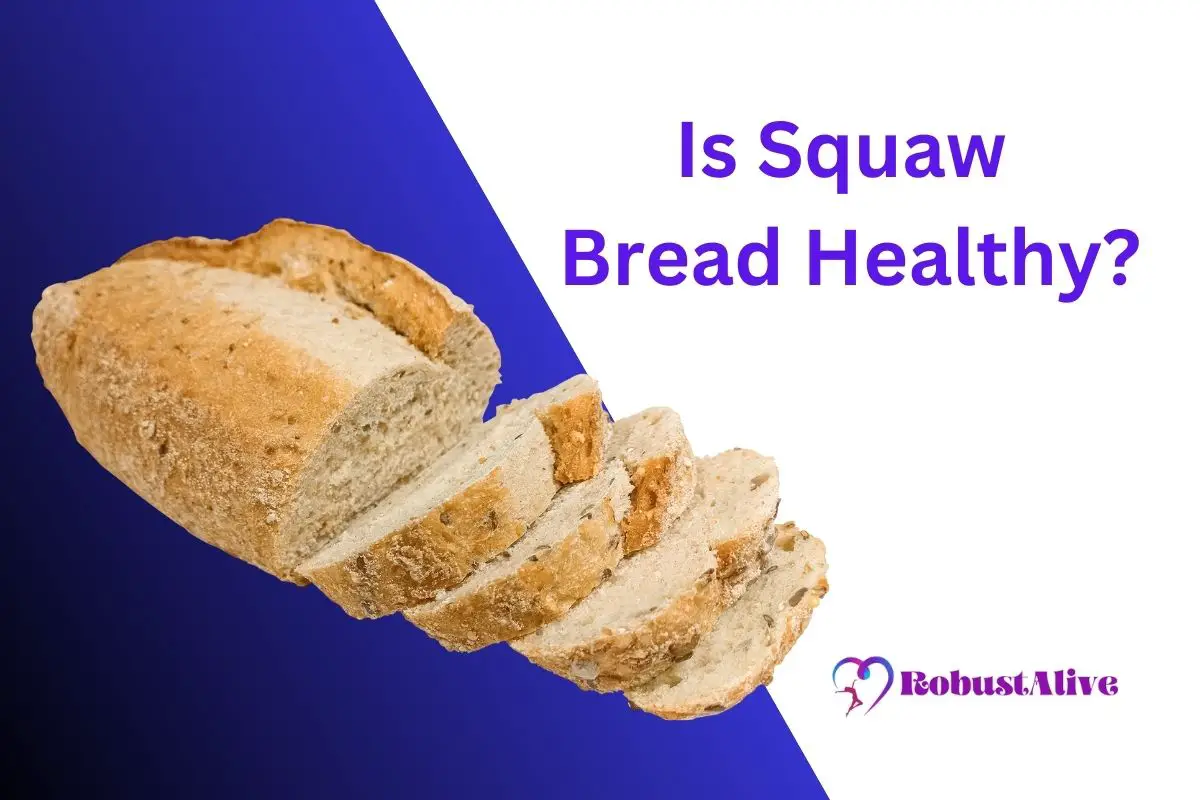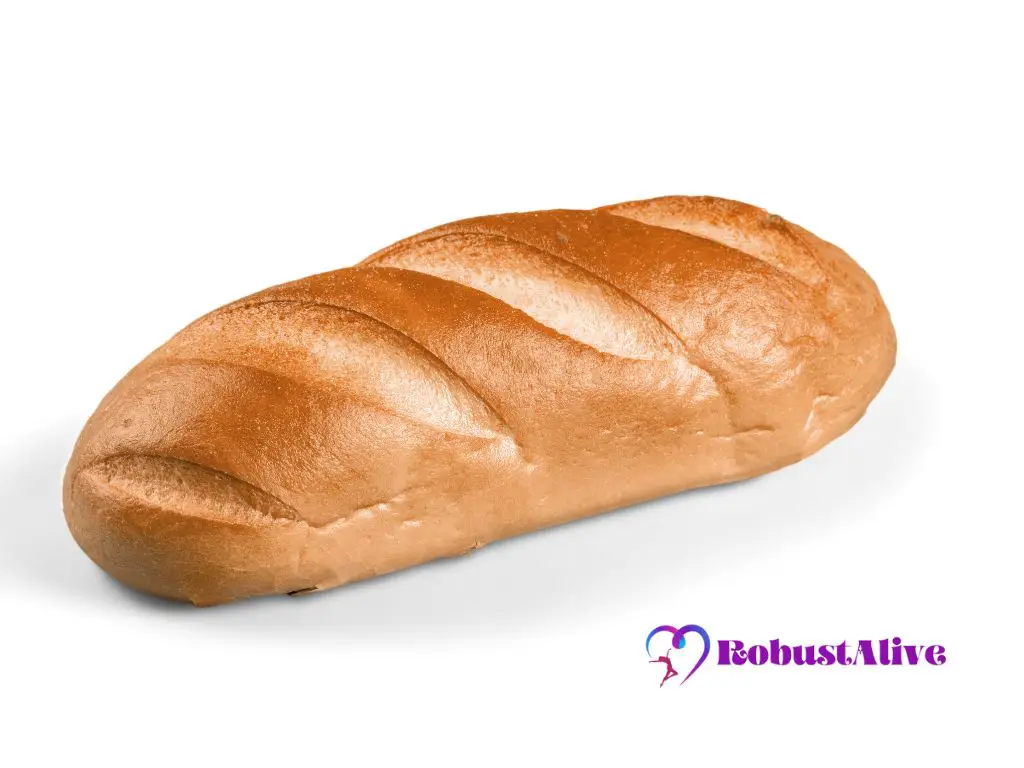Is Squaw Bread Healthy? Exploring the Health Benefits

Squaw bread is a multigrain loaf containing a healthy ingredient called “rye.” The bread is typically sweetened with molasses, which accounts for its dark brown color.
Now you must be wondering, is squaw bread healthy?
Squaw bread is an all-around perfect and healthy bread. It is a healthier option because it is fiber-rich and high-protein bread, compared to other bread types. A slice of squaw bread contains 60% more fiber and approximately 48.15% more protein compared to a slice of white bread. Further, squaw bread’s primary nutrient source and ingredient is rye, which is generally considered safe for most individuals unless they have a rye allergy.
Squaw bread is also somewhat nutritious and generally free of preservatives, making it a good option for those who favor eating natural foods. Keep reading to learn about the key nutrients in squaw bread, how it compares to other types of bread, and find out if it’s really healthy.
Squaw Bread Nutrition Facts
Here is the nutrition data provided by the USDA for one slice (43g) of squaw bread:
- Calories: 90
- Fat: 1g
- Sodium: 200mg
- Carbohydrates: 19g
- Sugar: 3g
- Fiber: 2g
- Protein: 4g
A slice of squaw bread measuring 5” x 4” and 3/8” thickness provides 90 calories and 19 grams of carbohydrates. It also provides 3 grams of sugar, 2 grams of fiber, along with 4 grams of protein. As for fats, this slice of bread provides only 1 gram of fat.
Let’s learn why squaw bread is considered one of the healthiest bread.
Health Benefits of Squaw Bread

Graphics Credit: Robustalive.com
Squaw bread has been more popular recently because of its positive health effects. Let’s find out more about the many health advantages of squaw bread:
Helps with Weight Loss
If you want to burn more fat, squaw bread is preferable to white bread. This is because squaw bread contains less fat and sugar than ordinary bread. Additionally, brown bread’s short-chain fatty acids are directly related to weight loss. Dietary fiber makes you feel fuller for longer.
According to a recent study from Chalmers University of Technology in Sweden, eating rye products rather than processed wheat positively impacts metabolism and weight control.
Excellent for Bowel Movement
It assists in controlling bowel motions and lowers the chance of constipation. The stools become softer and thicker due to the fiber’s capacity of squaw bread to absorb water, making them more straightforward to pass. Additionally, it raises the blood’s concentration of short-chain fatty acids, which support stomach function.
Regulates Blood Sugar
A slice of squaw loaf has 3 grams of sugar. So is squaw bread good for diabetes? Despite having some sugar, squaw bread contains compounds that assist in controlling blood sugar levels. They include phenolic chemicals, including caffeine and ferulic acid, which may inhibit the body’s absorption of glucose and insulin.
Keeps Your Heart Healthy
Squaw bread works better to support heart health than conventional wheat bread. It has been demonstrated to reduce LDL cholesterol and blood pressure.
The fiber components of this bread create gel-like things in your digestive system, reducing bile high in cholesterol. This aids in stopping the accumulation of cholesterol in your body.
Due to the high fiber and magnesium content of squaw bread, this diet is excellent for both heart and digestive health.
So is squaw bread healthy? It definitely is, given the points discussed above. But how healthy is Squaw bread compared to white bread, rye bread, sourdough, and pumpernickel? Here is a side-by-side comparison.
Squaw Bread VS White Bread VS Rye Bread VS Sourdough Bread VS Pumpernickel
Have you ever felt confused while selecting squaw bread for a healthy diet? You may solve the bread puzzle more quickly and easily by learning how it compares to other types of bread. This table will help you decide the healthiest option:
| Key Points | Squaw bread | White bread | Rye bread | Sourdough bread | Pumpernickel bread |
| Quantity | 1 slice (43 g) | 1 slice (30 g) | 1 slice (32 g) | 1 slice (64 g) | 1 slice (32 g) |
| Key ingredients | Rye flour and molasses | Flour, water yeast and salt | Ground whole rye kernels | Fermented flour and water | Rye flour and wheat flour |
| Sugar | 3g | 1.7g | 1.2g | 3g | 0.2g |
| Carbohydrate | 19g | 1.5g | 15g | 33g | 15g |
| Fat | 1g | 1g | 1.1g | 1.5g | 1g |
| Fiber | 2g | 0.8g | 1.9g | 1.4g | 2.1g |
| Protein | 4g | 2.7g | 2.7g | 6.9g | 2.8g |
| Calories | 90 | 80 | 83 | 174 | 80 |
When making bread, rye flour is a healthy ingredient. The nutritional content and health advantages of several types of bread are shown in the chart above. Squaw bread contains more protein and fiber per serving than other bread. Squaw bread will be the best option if you’re seeking bread that benefits your heart and blood sugar levels.
Interesting Squaw Bread Facts
The 1800s saw the development of squaw bread by German immigrants and the Native Americans who lived nearby. When some Germans decided to emigrate to the West, they brought rye seeds and family recipes with them. For alternatives to the ingredients they no longer had access to, they looked to the Native Americans. The bread was named Squaw Bread as a mark of respect and gratitude to the Native Americans for their generosity and new relationship.
Can Squaw Bread Cause Allergies?
Yes, it can. It is prohibited for anyone with celiac disease or a gluten allergy due to the gluten present in the wheat and rye of squaw bread. Bloating can also occur in people who are gluten and high-fibre-sensitive.
How to Make Squaw Bread At Home?
Squaw bread is a staple food for many indigenous cultures and has a long history, making it a significant component of American cuisine. This squaw bread recipe combines rye cornmeal to make tasty and nutritious bread that can be eaten as a snack or served with any meal.
| Ingredients | Quantity |
| Rye flour | 2.5 cups |
| Molasses | 4 tablespoons |
| Honey | 2 teaspoons |
| Water | 1.5 cups |
| Yeast | 1 packet |
| White sugar | 3 – 4 teaspoons |
| Cornmeal | 2 teaspoons |
| Cocoa powder | 2 teaspoons |
| Salt | 1 teaspoon |
| Butter | 1 portion |
Here’s How To Make Some Healthy Squaw Breads:
This recipe is simple to prepare and contains many delicious ingredients. It will be easy to make if you’ve never done it before. Roll up your sleeves and get in the cooking mode right away.
- Step 1: A large round basin should be filled with one packet of yeast, 1.5 cups of water, and 3 or 4 teaspoons of white sugar. It would help if you gave the yeast some time to rise.
- Step 2: Add the main component of rye flour. Measure two and a half cups of rye flour, four measured tablespoons of molasses, and a liberal two teaspoons of honey. Add two teaspoons each of cornmeal, cocoa powder, and butter after that.
- Step 3: Add precisely one teaspoon of salt to increase flavor. Don’t combine salt and sugar, and use caution when adding salt.
- Step 4: Hand-kneading the dough takes time and effort. Add all the ingredients to a mixer in the abovementioned amounts to speed up the process. Although traditional hand kneading has advantages, time is money. So, prepare the dough in a mixer to complete the task more quickly.
- Step 5: Form the dough into a circle and coat it with oil once it is prepared. The dough should then be placed in a medium-sized basin and left there for an entire hour with a clean towel covering it.
- Step 6: The oven should be preheated to 455 degrees Celsius.
- Step 7: Find a sizable tray that will fit in an oven precisely, then line it with parchment paper. After that, sprinkle some corn flour over the parchment to prevent the dough from sticking to it.
- Step 8: Place the tray in the water and let it bake for 35 minutes after the preheating period. To prevent the bread from burning, check it frequently.
- Step 9: After baking, wait a few minutes for the bread to cool before cutting into it or serving it to guests.
How to Store Squaw Bread?
- Keep squaw bread loaf in the refrigerator and seal it in a bread keeper or other airtight container. So that you may remove a few slices at a time without having to thaw the entire loaf, I advise slicing the bread before freezing.
- Place the bread loaves in a freezer-safe bag after double-wrapping them in plastic wrap. Freeze after properly labelling the bag.
Frequently Asked Questions (FAQs)
What is The Healthiest Bread to Eat?
Picking one healthy bread from the many available options is difficult. The following types of bread are healthy: sourdough bread, squaw bread, Ezekiel bread, rye bread, and pumpernickel bread.
Does Squaw Bread Have Lots of Carbs?
Squaw bread contains 22g of total carbohydrates per slice, according to Carbs in Milton’s Craft Bakers.
Is Squaw Bread Vegan?
It’s not, though. Because it contains butter and honey, both of which are animal byproducts. However, if you prepare your own at home, you can convert this bread to veganism. For instance, you can use agave nectar for honey in your recipe and coconut oil for butter.
Is Squaw Bread Gluten Free?
No, it contains gluten. Squaw bread has rye flour, which contains gluten, so it is not gluten-free. Therefore, this bread is unsafe to eat if you have celiac disease or gluten sensitivity.
Is Squaw Bread Sweet?
Yes. Squaw bread tastes sweet. However, compared to white bread, squaw bread is less sweet.
Are Rye Bread and Squaw Bread the Same?
They are different from one another. Squaw bread contains various ingredients in addition to rye, which is one of its key components.
Bottom Line
Now let us recap: is squaw bread healthy for you? When made with the proper ingredients and eaten in moderation, squaw bread can be a nutritious alternative. The dish contains vital elements, including fiber, protein, and vitamins, and adding honey provides a natural sweetener with antioxidant and antibacterial effects.
However, it’s crucial to remember that the overall healthiness of squaw bread might vary depending on the particular recipe and the serving sizes taken. Moderation is essential with all foods to maintain a healthy and balanced diet. Overall, squaw bread may be a wholesome and fulfilling addition to any meal because of its fascinating history and mouthwatering flavor.





